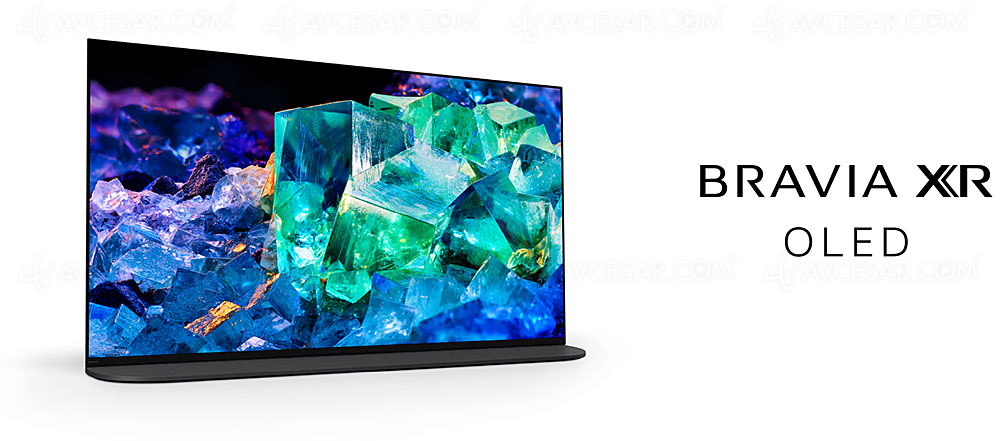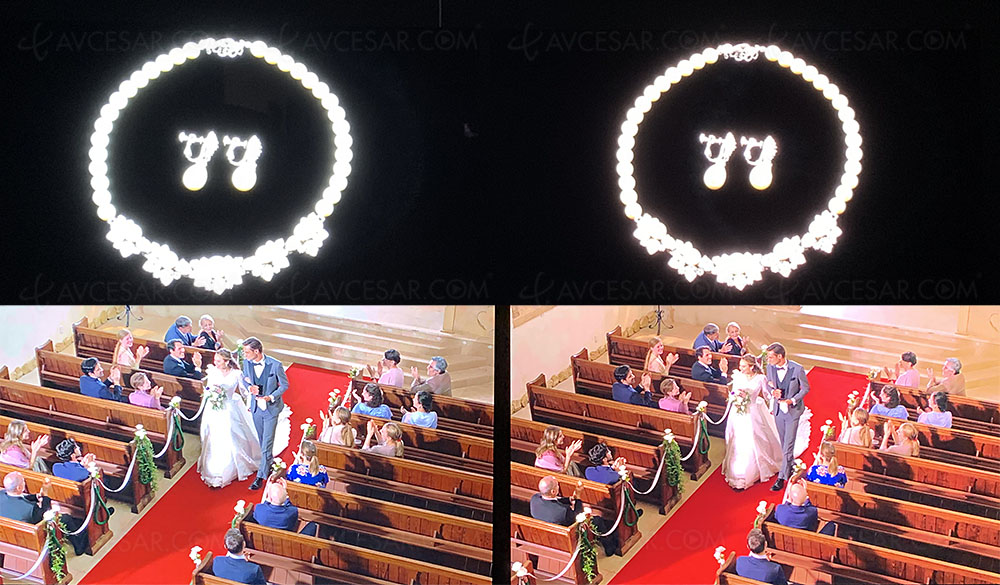Namely, the confrontation between the two screens was organized in Intense mode (Vif or Vivid equivalent), the only one to benefit on the A95K specimen from a complete development of the new XR Cognitive Processor Phase 2 video processing according to the representatives of the Brand. That is. It will therefore be a question, when the time comes, of confirming the results obtained and described below in Cinema mode.

Sony 65A95K QD Oled/QD-Display, increasing momentum
Like a drawing, a picture is worth a long speech. This is why you can by clicking on the images below view the differences between the image of the Sony 65A90J on the left and the image of the Sony A95K on the right. If the light peak announced about 25% higher is not obvious, the difference is nevertheless noticeable on many occasions. This extra brightness also affects the level of perceived precision, which is also on the rise. The human eye is thus made, more sensitive to light than colors, a higher contrast undeniably leads to improved sharpness (see cabbage romanesco below). That's not bad.

QD Oled/QD-Display, Quantum Dots nanocrystals at the rendezvous of colors
But if there is one area where the Sony A95K widens the gap, it's in the colors. These are denser, brighter, more radiant. There is no doubt that the luminosity of the QD OLED/QD-Display technology is part of this result, even if it is also explained by the presence of Quantum Dots nanocrystals to create the red and green hues.

Blooming on White Oled TVs? If it is possible (but very light)
There is one last remark born from this comparison, the materialization on the Sony A90J of a slight Blooming phenomenon on luminous objects on a dark background (see photo of the necklace below) that we had never really noticed so far, White Oled TVs have done better than LCDs on this issue. It's still very light, of course, but it's there. It will have been necessary to have a more efficient technology on this technical aspect and two screens side by side to formalize Blooming on a Woled TV. The white pixel's fault, no doubt about it…

Sony 65A95K vs Sony 65A90J advantage
In short, in the end, we can see that the Sony 65A95K does everything - color, brightness, precision - a little better than the Sony 65A90J equipped with a high-brightness OLED LG Dislay panel (Evo equivalent at LG). Taken independently of each other, none of these elements give a clear advantage to QD Oled/QD-Display technology. Taken as a whole, it must be recognized that the rendering differs with dynamics, colorimetry and an impression of sharpness in favor of the 65A95K.
There remains one point that we have not been able to fully verify, the announced greater viewing angle on the QD Oled/QD-Display screens vs TV Woled, the layout of the TVs dedicated to the demonstration did not allow to form a definitive idea.
